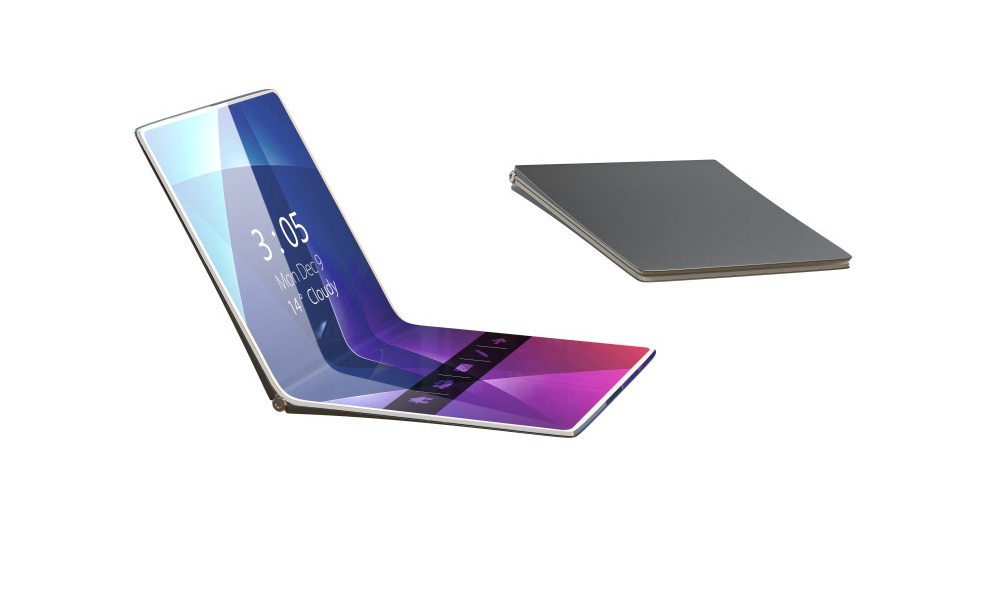Apple Granted Patent for Super-Futuristic, Bendable iPhone Featuring an OLED Display, Flexible Components, and More

Toggle Dark Mode
A consortium of freshly leaked documents from the U.S. Patent and Trademark Office (USPTO) reveal that Apple has been tossing around the concept of a foldable, “clamshell”-style iPhone for years now. In fact, the company has been so progressive in its efforts to embody this otherwise odd-fitting form factor, that it was even granted a patent covering the device this week.
Apple’s patent, U.S. Patent No. 9,504,170, is defined by its application as a “Flexible OLED Device” — and is further described as “an iPhone with a foldable full-screen display,” according to AppleInsider.
Interestingly, though perhaps unsurprising to some, Apple’s patent lays the groundwork for what could — but more than likely never will — be the company’s most far-out and flexible device ever to see the light of day. The device’s foldable, clamshell-style form factor — similar to Motorola’s once popular RAZR smartphones — is achieved thanks in part to a vast network of flexible components and filaments — chiefly among them, the device’s bendable OLED display, which, according to the document, could be manufactured using a basal layer of nitinol, a nickel and titanium-based composite metal known best for its elasticity.

Apple’s patent filing also details a number of embodiments that its flexible OLED flip phone could take. In one, for instance, the application describes a device housing that’s inherently split into two, upper and lower halves — each containing their own assortment of CPUs, cameras, flash storage, memory, and more, all joined in the middle by a complex network of bendable circuitry. For example, PatentlyApple notes how the two “separate” halves of the device could ultimately be attached via a single- or multi-shaft hinge mechanism of some sort — itself housing a myriad of flexible, printed circuitry to feed power to the entire device.
Apple’s patent appears to lay out the case for a flexible OLED display, boasting additional layers of material that will allow it to bend, rotate, and more, all while maintaining a crease-less composition. Apple’s foldable OLED display is by far the most central component of the device, and so the patent application also describes several embodiments that this crucial structure could encompass.
In one embodiment, for instance, the device’s OLED display simply folds over onto itself — similar to a clamshell-style flip phone, or say, a warm pita. In an alternative, albeit highly improbable embodiment, Apple’s foldable OLED display is created using materials that will allow it to completely retract itself for storage in either or both housing compartments.
Of course, we strongly encourage you to take this all in with a grain of salt — not only because Apple has a tendency of patenting much more than the company actually produces, but also because, simply looking back on the progression of the iPhone’s structural design over the last decade or so, one could (hopefully) see that such a dramatic, far-out re-engineering of the iPhone — especially at this stage in the game — is perhaps just as “far-out” as the device itself.
Would you purchase a bendable, flip phone-style iPhone if Apple offered one?
Let us know in the comments!
[The information provided in this article has NOT been confirmed by Apple and may be speculation. Provided details may not be factual. Take all rumors, tech or otherwise, with a grain of salt.]






